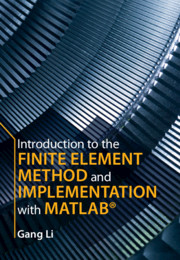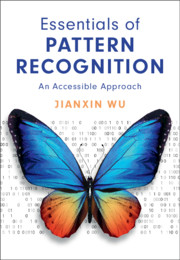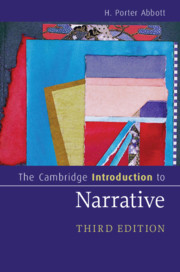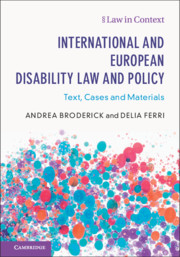Refine search
Actions for selected content:
36807 results in Cambridge Textbooks
13 - Coupled Oscillators
- from Part III
-
- Book:
- Modern Classical Mechanics
- Published online:
- 30 November 2020
- Print publication:
- 10 December 2020, pp 530-574
-
- Chapter
- Export citation
B - Integral Theorems
- from Appendices
-
- Book:
- Modern Classical Mechanics
- Published online:
- 30 November 2020
- Print publication:
- 10 December 2020, pp 663-669
-
- Chapter
- Export citation
References
-
- Book:
- Modern Classical Mechanics
- Published online:
- 30 November 2020
- Print publication:
- 10 December 2020, pp 680-681
-
- Chapter
- Export citation
Appendices
-
- Book:
- Modern Classical Mechanics
- Published online:
- 30 November 2020
- Print publication:
- 10 December 2020, pp 655-656
-
- Chapter
- Export citation
Acknowledgements
-
- Book:
- Modern Classical Mechanics
- Published online:
- 30 November 2020
- Print publication:
- 10 December 2020, pp xvii-xvii
-
- Chapter
- Export citation
4 - Lagrangian Mechanics
- from Part I
-
- Book:
- Modern Classical Mechanics
- Published online:
- 30 November 2020
- Print publication:
- 10 December 2020, pp 153-196
-
- Chapter
- Export citation
Part I
-
- Book:
- Modern Classical Mechanics
- Published online:
- 30 November 2020
- Print publication:
- 10 December 2020, pp 1-2
-
- Chapter
- Export citation
10 - From Black Holes to Random Forces
- from Part II
-
- Book:
- Modern Classical Mechanics
- Published online:
- 30 November 2020
- Print publication:
- 10 December 2020, pp 395-434
-
- Chapter
- Export citation

Introduction to the Finite Element Method and Implementation with MATLAB®
-
- Published online:
- 09 December 2020
- Print publication:
- 30 July 2020
-
- Textbook
- Export citation

Essentials of Pattern Recognition
- An Accessible Approach
-
- Published online:
- 08 December 2020
- Print publication:
- 19 November 2020
-
- Textbook
- Export citation

The Cambridge Introduction to Narrative
-
- Published online:
- 04 December 2020
- Print publication:
- 03 December 2020
-
- Textbook
- Export citation

International and European Disability Law and Policy
- Text, Cases and Materials
-
- Published online:
- 03 December 2020
- Print publication:
- 31 October 2019
-
- Textbook
- Export citation
10 - Character and Self in Narrative
-
- Book:
- The Cambridge Introduction to Narrative
- Published online:
- 04 December 2020
- Print publication:
- 03 December 2020, pp 136-150
-
- Chapter
- Export citation
3 - Summary offences
-
- Book:
- Criminal Law Perspectives
- Published online:
- 19 February 2021
- Print publication:
- 03 December 2020, pp 125-215
-
- Chapter
- Export citation
Table of statutes
-
- Book:
- Criminal Law Perspectives
- Published online:
- 19 February 2021
- Print publication:
- 03 December 2020, pp xxxix-lix
-
- Chapter
- Export citation
2 - Defining Narrative
-
- Book:
- The Cambridge Introduction to Narrative
- Published online:
- 04 December 2020
- Print publication:
- 03 December 2020, pp 12-28
-
- Chapter
- Export citation
6 - Homicide
-
- Book:
- Criminal Law Perspectives
- Published online:
- 19 February 2021
- Print publication:
- 03 December 2020, pp 329-419
-
- Chapter
- Export citation
Contents
-
- Book:
- Criminal Law Perspectives
- Published online:
- 19 February 2021
- Print publication:
- 03 December 2020, pp v-xvii
-
- Chapter
- Export citation
Index of Authors and Narratives
-
- Book:
- The Cambridge Introduction to Narrative
- Published online:
- 04 December 2020
- Print publication:
- 03 December 2020, pp 264-273
-
- Chapter
- Export citation
Preface to the First Edition
-
- Book:
- The Cambridge Introduction to Narrative
- Published online:
- 04 December 2020
- Print publication:
- 03 December 2020, pp xvi-xviii
-
- Chapter
- Export citation
